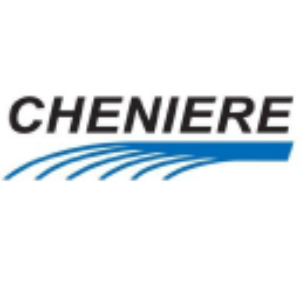Cheniere Announces Publication of Updated Peer-Reviewed LNG Life Cycle Assessment
Gas-pathing algorithm and further integration of measurement data improve supply chain-specific tracking of greenhouse gas emissions
The enhanced study has been published in the American Chemical Society’s Sustainable Chemistry & Engineering Journal, and it builds upon Cheniere’s first LCA study, published in 2021.
The updated study deploys an algorithm that models natural gas pathways throughout Cheniere’s supply chain in 2022, from the natural gas production basin, through the transmission network, to the Company’s
The study models cases with conventional emissions inventory inputs and measurement data. It finds in all cases that the 2022 GHG emissions intensity of Cheniere’s delivered LNG is lower than those presented in the
“This study reinforces the environmental competitiveness of Cheniere’s LNG, while demonstrating the value of direct emissions measurement to better understand the environmental footprint of LNG and identify areas for improvement,” said Jack Fusco, Cheniere’s President and Chief Executive Officer. “We are charting a path forward with concrete data, science and actions to ensure LNG and natural gas continue to play a role in the global transition to a lower-carbon future for decades to come.”
The updated study is co-authored by individuals from the University of
About Cheniere
Cheniere Energy, Inc. is the leading producer and exporter of liquefied natural gas (“LNG”) in
For additional information, please refer to the Cheniere website at www.cheniere.com and Quarterly Report on Form 10-Q for the quarter ended September 30, 2024, filed with the Securities and Exchange Commission.
Forward-Looking Statements
This press release contains certain statements that may include “forward-looking statements” within the meanings of Section 27A of the Securities Act of 1933 and Section 21E of the Securities Exchange Act of 1934. All statements, other than statements of historical or present facts or conditions, included herein are “forward-looking statements.” Included among “forward-looking statements” are, among other things, (i) statements regarding Cheniere’s financial and operational guidance, business strategy, plans and objectives, including the development, construction and operation of liquefaction facilities, (ii) statements regarding regulatory authorization and approval expectations, (iii) statements expressing beliefs and expectations regarding the development of Cheniere’s LNG terminal and pipeline businesses, including liquefaction facilities, (iv) statements regarding the business operations and prospects of third-parties, (v) statements regarding potential financing arrangements, (vi) statements regarding future discussions and entry into contracts, (vii) statements relating to Cheniere’s capital deployment, including intent, ability, extent, and timing of capital expenditures, debt repayment, dividends, share repurchases and execution on the capital allocation plan and (viii) statements relating to our goals, commitments and strategies in relation to environmental matters. Although Cheniere believes that the expectations reflected in these forward-looking statements are reasonable, they do involve assumptions, risks and uncertainties, and these expectations may prove to be incorrect. Cheniere’s actual results could differ materially from those anticipated in these forward-looking statements as a result of a variety of factors, including those discussed in Cheniere’s periodic reports that are filed with and available from the Securities and Exchange Commission. You should not place undue reliance on these forward-looking statements, which speak only as of the date of this press release. Other than as required under the securities laws, Cheniere does not assume a duty to update these forward-looking statements.
View source version on businesswire.com: https://www.businesswire.com/news/home/20241111631715/en/
Cheniere Energy, Inc.
Investors
Randy Bhatia, 713-375-5479
Frances Smith, 713-375-5753
Media Relations
Eben Burnham-Snyder, 713-375-5764
Bernardo Fallas, 713-375-5593
Source: Cheniere Energy, Inc.






